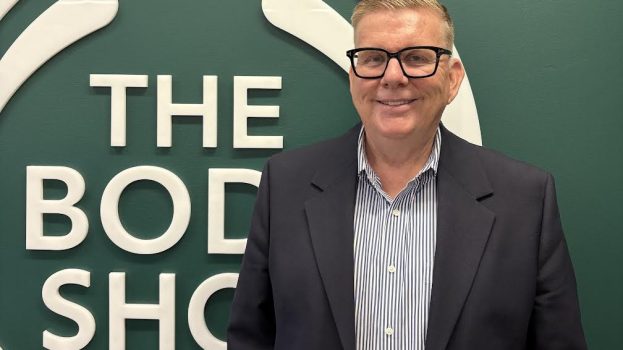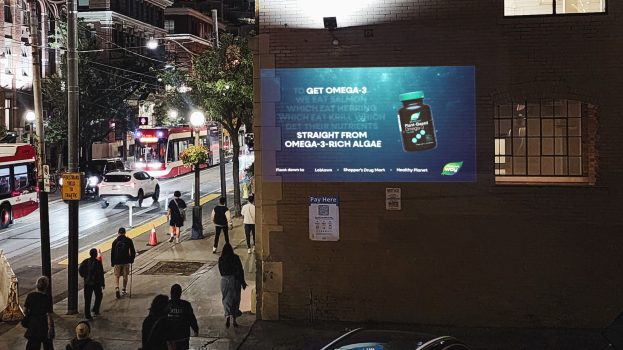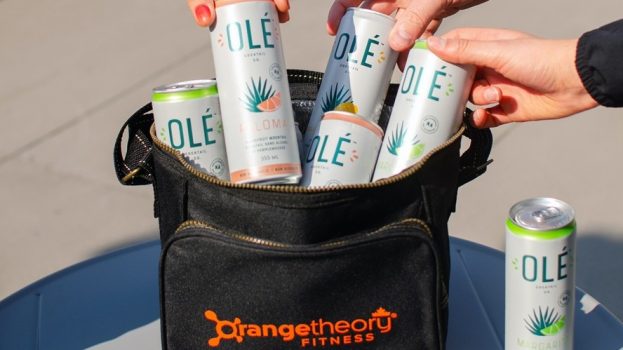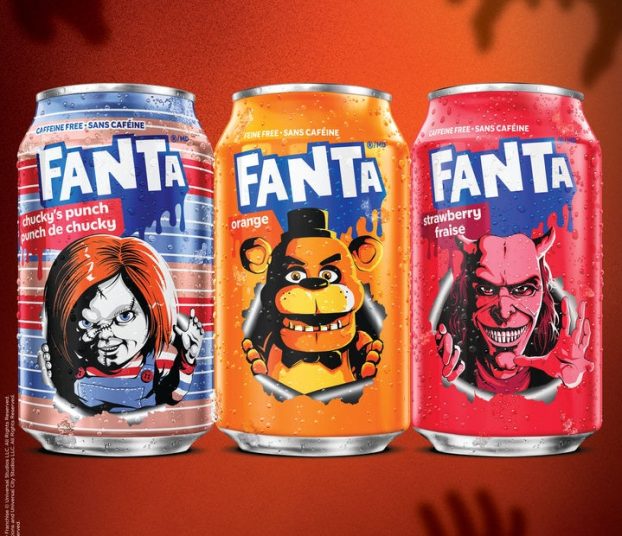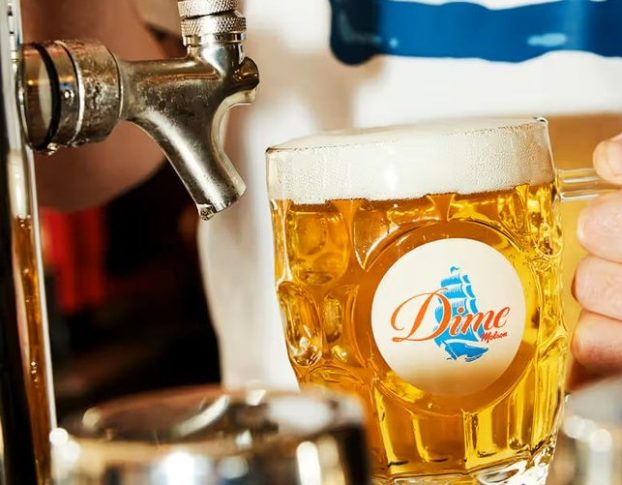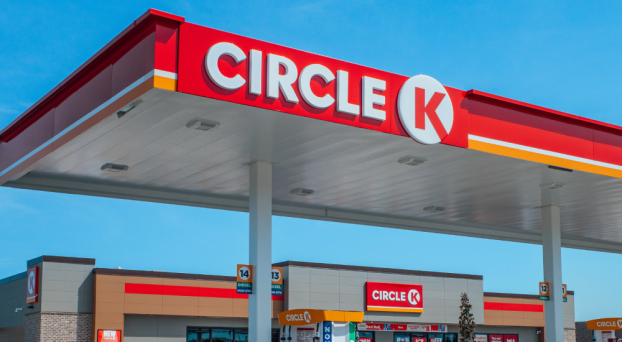It used to be that if a man wanted to smell clean he grabbed a stick of something white and rolled it along his armpits. Then it was a gel, sometimes even an aerosol spray. Point being it was nothing too fancy. Times have changed and now something called a ‘bodyspray’ – fragrant all-body deodorants for men – has made its entrance into the market.
Except for Colgate-Palmolive, all the major packaged goods companies in the beauty category have their entrants – Unilever’s Axe, Gillette’s Right Guard Xtreme, Procter & Gamble’s Old Spice High Endurance and even Adidas.
Sissified? Nope. That’s what’s interesting – these brands are being positioned as a macho guy’s secret weapon to attract girls.
And it’s working: according to ACNielsen’s MarketTrack, it’s the hottest segment of the male anti-perspirant/deodorant (APDO) category, which is valued at about $111 million. Since their introduction to the Canadian market last year, men’s bodysprays have reached almost $20 million in annual sales with more than a 100% dollar increase recorded between 2002 and 2003.
In fact, the male anti-perspirant/deodorant category as a whole has seen a 26% growth in dollar sales, with male bodysprays accounting for close to 10% of total category (including female APDO) sales.
Unilever was first to market its Axe brand in Canada back in August 2002. (Axe had enjoyed strong popularity in Europe since the early 1980s.)
It is easily the category leader, according to John Filipetto, brand manager for Axe and Lever 2000.
‘We’re doing way beyond any expectations,’ says Filipetto, who adds that the company expected to be at a 40% share for the segment but finds itself currently at 70%.
‘We were originally uncertain that bodysprays would catch on and whether people would pay the price we were asking for this product. And they’ve been doing it.
‘The guys have really responded and we think it’s because we talk to them in a voice they think is relevant.’
Taking an approach normally associated with beer marketing, TV and cinema creative (done by New York-based Bartle, Bogle & Hegarty) and promotions (by Toronto-based Segal Communications) have featured lots of attractive young girls illustrating how applying the product will help you land some company.
At launch, for example, Axe samples weren’t handed out at drug stores but instead on what Filipetto describes as ‘bar tours.’
‘Our target is 18- to 24-year-old guys, and bars are the most relevant place for them when they’re trying to meet girls,’ he says.
Unilever has been able to capitalize on a major cultural shift in attitude among young men that began in the ’90s. Guys are now more concerned than ever with fashion and looking good, a trend anchored by the rise of the ‘lad mags’ like Maxim and Stuff.
Not to be left behind, Adidas introduced its bodyspray, called simply ‘Adidas Bodyspray,’ in April of this year. Alex Laferrière, marketing manager for Montreal-based COTY Canada, which markets the Adidas brand, says, ‘It replaces some of the traditional fragrances that the consumer might use. It’s handy, it’s fun.’
Adidas’ bodyspray has tried to capitalize on its cachet as a respected name in sports by associating itself with over 60 sporting and cultural events like the Molson Indy and the Montreal Jazz Festival. But staying away from the performance message traditionally pushed by deodorant sticks is important for the brand, so Adidas has had to walk a somewhat more careful line. Laferriere says Adidas is also going the route of ‘lifestyle advertising’ at these events and has had pretty girls on hand to get the message across that a nice scent is the ticket to a hot date.
Though second in the segment to Unilever, Adidas has been much more cautious with its marketing and Laferriere says the company is only now feeling confident enough to expand into mass.
‘We’re looking at expanding the line and developing new advertising geared specifically toward that [young male] market. It has reached a point now where we feel it’s sustainable long-term.’
For now, Laferriere says Adidas is content to ride Unilever’s coattails and says top-shelf positioning beside Axe has helped it retain its number-two position.
Interestingly, packaged goods giant Procter & Gamble isn’t aggressively pursuing the competition, although it does have Old Spice High Endurance in the segment. ‘This isn’t a huge brand for us and at some point you sometimes have to make some tough decisions,’ says Sarah Kemp, public relations manager. ‘For us the Red Zone [deodorant stick] has the bigger potential.’
That decision might have something to do with the fact that Old Spice is not historically associated with youth and vigor. ‘I’m surprised they’re staying with that brand,’ says Eric Meerkamper, partner at Toronto-based youth consultancy D-Code. ‘It’s very much an [old brand]. That’s the sort of stuff you saw on the shelf in your bathroom – your dad’s stuff.’
Strategy asked three marketing experts to comment on the potential for the new category and the challenge in teaching old dogs new tricks.
Eric Meerkamper, partner, D-Code, Toronto
At first, Axe faced the challenge that there was no real perceived need for this product. Before, if you were going out, a bit of underarm deodorant and a shot of cologne seemed to be sufficient.
So Unilever focused more on the attraction component and the benefits of it. And they had to overcome that whole idea of perfume being girly.
Axe has a certain lifestyle associated with it – with going out, being confident, being able to interact with people and bringing out your hidden, expressive individualism.
They’ve done that but they’ve had to be careful about not falling too much into a lifestyle that’s too feminine, too sensitive. And their ads have tried to keep quite a bit of edge to them.
It reminds me of Impulse 15 years ago – when a strange man hands you flowers it must be Impulse.
Now it’s if a hot babe jumps you in the elevator, it must be Axe.
Michele Erskine, VP, Solutions Research Group, Toronto
Adidas cologne is a really strong brand with boys, so I would say go with similar strategies [for bodyspray]. [It should be] an extension of what they’re doing with the other products and they need to make sure kids know they now have Adidas fragrance in a bodyspray format. They have the advantage there in that it’s an established brand that boys already trust.
I think it’s fine [for Procter & Gamble to use the Old Spice name for its bodyspray]. No one expected them to be as strong a player in the teen boy market as they became with Old Spice Red Zone. What they did with it was brilliant. They had a young, hip looking guy [as a spokesperson] and usually he was boarding or doing something like that. And he’d say that it worked and it also smelled good and it was cool. That’s really all you need to say.
There’s an assumption that being associated with an established, old brand is bad and it isn’t always. We’re seeing a lot of these old brands come back to life again.
Brian Collinson, CD, Macphee, Toronto
Beer companies have been doing it for years and they seem to understand that both shock advertising and making people laugh is great.
Procter & Gamble’s approach has been to give them the same message again and again, and people get it through their heads that ‘OK, I want to stay dry so therefore I yadda yadda.’ It was a category that had become very stagnant in that way. It was about weight and reach as opposed to getting out there and really breaking ground.
[Others] are applying more aggressive advertising approaches. They know their target is not 50-year-olds. It’s 18- to 25-year-olds and it just makes sense.
Adidas has the heritage to be able to say, ‘Hey, we know all about sport. And therefore we have some credibility to bring in a bodyspray for sports people.’ In the consumers’ minds it will have an immediate credibility. Adidas should market that product under the banner of sports because [of that]. Why would the company start talking about lifestyle when it is not a lifestyle brand? It’s a sports brand.

